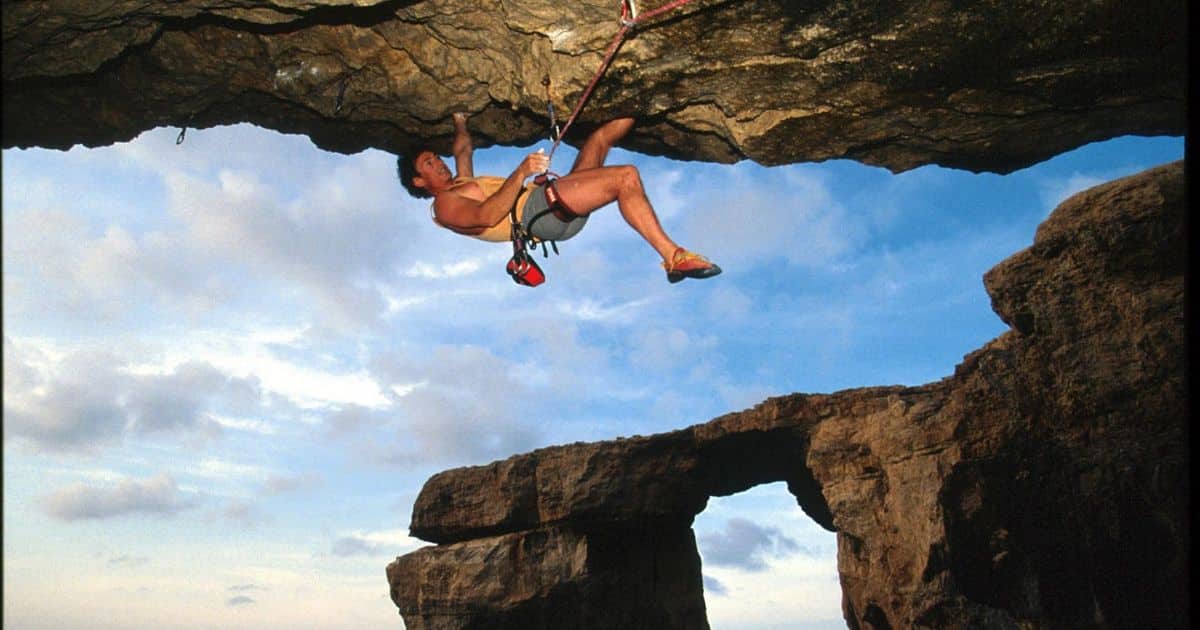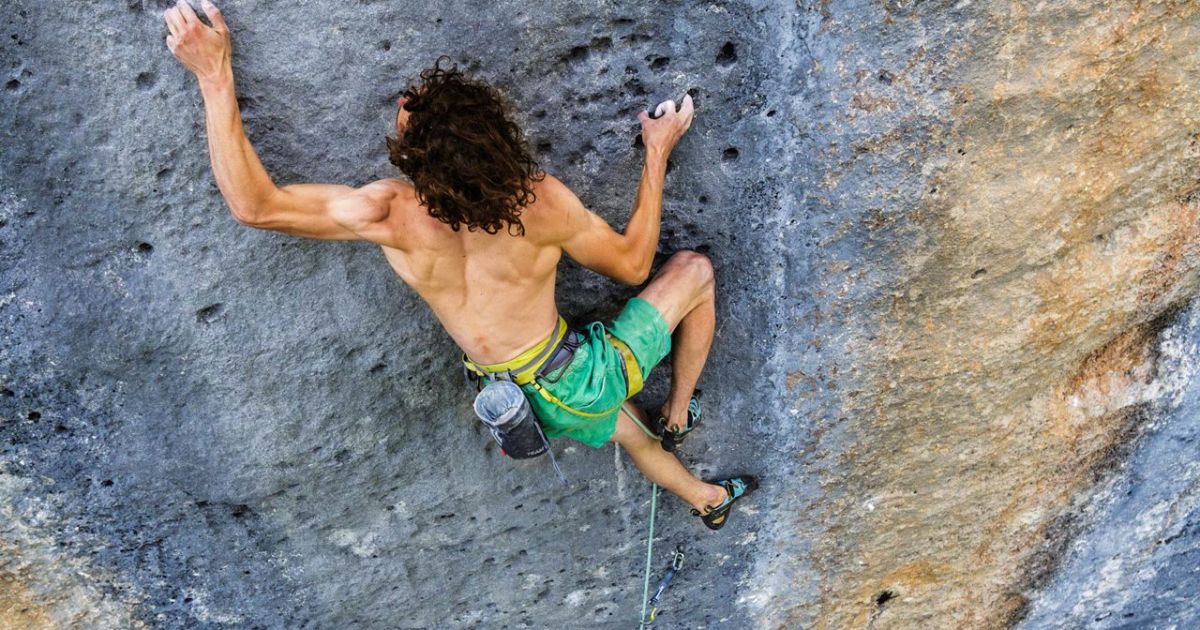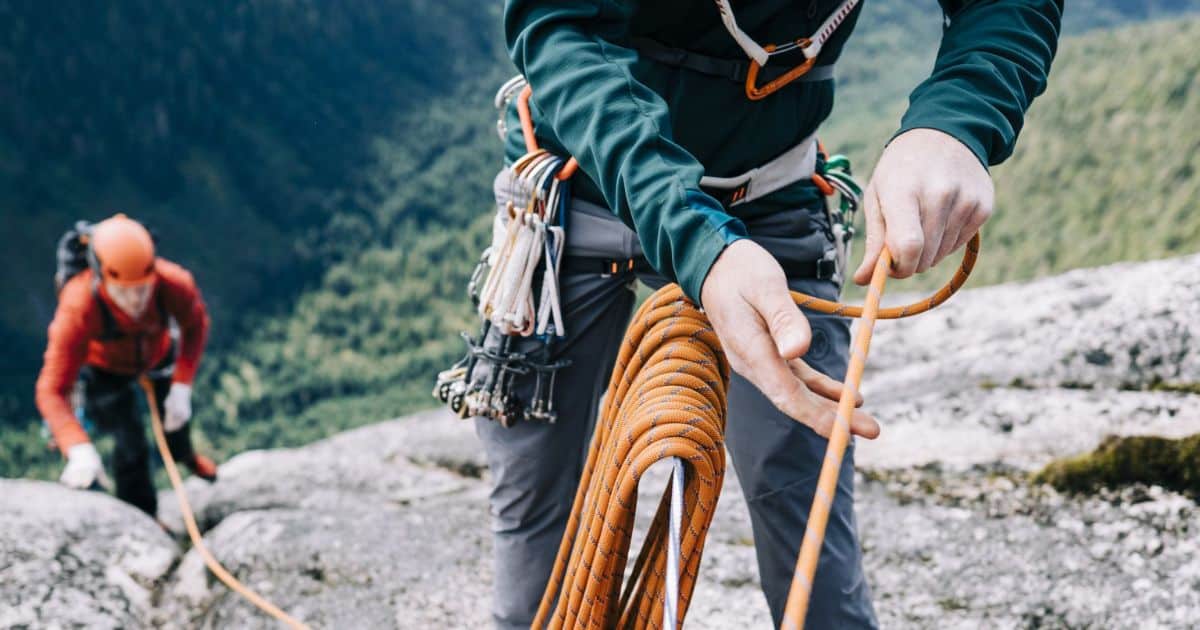In the realm of climbing, there exists a unique and enigmatic technique known as the Gaston. Like a skilled conductor guiding a symphony, the climber’s hand reaches outwards, exerting force against the rock face, defying gravity’s pull. In this article, we delve into the world of Gastons, exploring their origins, execution, and applications in climbing routes. Whether you are a beginner seeking knowledge or a seasoned climber seeking mastery, join us on this thrilling ascent toward understanding the Gaston technique.
Key Takeaways
- The Gaston technique is a climbing technique where a climber applies outward pressure with their hand on a hold to provide balance, and stability, and prevent slipping.
- It is named after legendary French climber Gaston Rebuffat and was popularized in the 1950s. It has since been recognized and adopted as a fundamental skill in climbing.
- Famous climbers such as Chris Sharma and Lynn Hill have utilized the Gaston technique in their ascents, demonstrating its efficacy in increasing reach and stability.
- While the Gaston technique offers advantages such as increased range and options on the wall, it also has disadvantages such as strain on fingers and forearms, fatigue, and potential limitations in effectiveness for certain types of climbing holds or routes.
Definition of Gaston in Climbing
By placing their hand in a Gaston position, climbers can create an opposing force against the hold, preventing them from slipping or losing balance. The benefits of using the Gaston technique are numerous. Firstly, it provides climbers with additional stability and control during challenging moves, increasing their chances of completing a route. Secondly, it allows climbers to tackle moves that might otherwise be impossible, expanding their range of climbing abilities. Lastly, the Gaston technique enhances overall body awareness and coordination, as climbers learn to apply precise and deliberate pressure to maintain their position on the wall.
Origins and History of the Gaston Technique
The origins and history of the Gaston technique in climbing can be traced back to the evolution of climbing techniques over time. The technique is named after legendary French climber Gaston Rebuffat, who popularized it in the 1950s. Rebuffat’s innovative use of the Gaston technique, along with other influential climbers who followed, has contributed to its recognition and adoption as a fundamental skill in climbing.
Evolution of Gaston Technique
The evolution of the Gaston technique in climbing can be traced back to its origins and historical development. This technique, named after Pierre Gaston, a renowned French climber, has undergone significant advancements over the years. Here are three key aspects that highlight the evolution of the Gaston technique:
- Refinement of body positioning: As climbers experimented with different hand positions and body movements, they discovered the optimal angles and leverage points for executing the Gaston technique.
- Enhanced training methods: With the increasing popularity of climbing, specialized training programs and exercises have been developed to improve climbers’ strength, flexibility, and technique, including the Gaston technique.
- Equipment innovations: The evolution of climbing gear, such as specialized holds, fingerboards, and training devices, has provided climbers with more opportunities to practice and perfect the Gaston technique.
Understanding the historical development and advancements in the Gaston technique provides a foundation for exploring how famous climbers have utilized this technique to achieve remarkable feats.
Famous Climbers Using Gaston
Famous climbers’ utilization of the Gaston technique, its origins, and historical development will now be explored in the context of the article titled ‘What Is a Gaston in Climbing’. The Gaston technique has been employed by numerous renowned climbers, showcasing its effectiveness in challenging climbing scenarios. One such climber is Chris Sharma, known for his innovative and dynamic climbing style. Sharma has utilized the Gaston technique in his ascents, leveraging its advantages to overcome difficult sections of routes.
Another notable climber is Lynn Hill, famous for her groundbreaking free ascent of The Nose on El Capitan. Hill’s exceptional use of the Gaston technique during her ascent demonstrated its efficacy in navigating the challenging terrain. However, it is important to note that while the Gaston technique offers advantages such as increased reach and stability, it also has its limitations, particularly in terms of strain on the shoulders and potential for injury. Transitioning to the subsequent section, let’s now delve into how to execute a Gaston move.
How to Execute a Gaston Move
- To execute a Gaston move in climbing, follow these precise steps:
- Start by identifying the hold you will be collecting. It is usually a side pull or sloping hold that requires a strong grip.
- Position your body in a way that allows you to maximize your reach and leverage. This may involve twisting your torso and extending your arm fully.
- Apply pressure to the hold with your palm facing outward, using your fingers to maintain control and stability.
Improving your Gaston technique requires practice and attention to detail. Common mistakes in executing Gaston’s moves include not fully committing to the move, lacking proper body positioning, and not applying enough pressure to the hold. By focusing on these aspects and refining your technique, you can become more proficient in executing Gaston’s moves.
Now, let’s explore the common uses of Gaston’s in climbing routes.
Common Uses of Gastons in Climbing Routes
Common uses of Gaston’s in climbing routes include executing dynamic moves, reaching for holds that are difficult to access, and maintaining body tension. When faced with a dynamic move, climbers often rely on Gaston’s to generate power and control. Gastons are also useful for reaching distant or high holds that require extra leverage. Additionally, utilizing Gaston’s helps climbers maintain body tension and stability, enabling them to navigate challenging sections of a route with precision and control.
Gaston for Dynamic Moves
Gastons are frequently employed in climbing routes to execute dynamic moves with precision and control. When it comes to dynamic Gaston moves, climbers rely on the Gaston technique in bouldering for specific purposes. Here are three common uses of Gaston’s in climbing routes:
- Generating momentum: By using a Gaston hold as a launching point, climbers can generate the necessary momentum to execute dynamic moves. The Gaston provides a stable anchor to push off from, allowing climbers to propel themselves toward the next hold.
- Reaching distant holds: When the next hold is out of reach, climbers can utilize a Gaston hold to bridge the gap. By extending their reach and engaging their entire body, climbers can latch onto the distant hold with precision and control.
- Balancing body weight: Gastons are often used to balance body weight during dynamic moves. By applying pressure against the Gaston hold, climbers can maintain stability and control while transitioning from one hold to another.
Gaston for Reachy Holds
Gaston holds are often utilized in climbing routes to effectively reach holds that are out of the climber’s immediate reach. When faced with small holds that are difficult to grasp, climbers can rely on the Gaston technique to gain control. By using a Gaston hold, the climber’s hand is positioned with the thumb pointing down and the fingers pressing against the hold, creating a lever-like effect.
This allows the climber to generate more force and stability, enabling them to reach and maintain control on smaller holds. Gaston holds are particularly useful in slab climbing, where the holds are often small and require precise and controlled movements. By mastering the Gaston technique, climbers can enhance their ability to tackle reachy holds and navigate challenging slab climbing routes.
Gaston for Body Tension
How can climbers utilize the Gaston technique to enhance their body tension and overcome challenges in climbing routes? The Gaston technique is not only useful for reaching holds, but it also offers several benefits for body control in climbing. Here are three ways climbers can make the most of the Gaston technique to improve their body tension:
- Increased stability: By using the Gaston technique, climbers can engage their muscles to stabilize their body position, allowing them to maintain balance and control on the wall.
- Core activation: The Gaston technique requires climbers to engage their core muscles, which helps to improve overall body tension and strength.
- Efficient movement: By incorporating the Gaston technique, climbers can make more efficient movements, using their body tension to generate power and control during challenging climbing sequences.
Advantages and Disadvantages of the Gaston Technique
The Gaston technique, although it requires a specific set of skills and strength, offers climbers distinct advantages and disadvantages. One of the main advantages of using the Gaston technique is the increased stability it provides. By using the palm-down position, climbers can exert more force against the hold, resulting in better control and balance. Additionally, the Gaston technique allows climbers to reach holds that may be out of reach with other techniques, expanding their range and options on the wall.
However, there are also disadvantages to using the Gaston technique. One major drawback is the strain it puts on the fingers and forearms, as the palm-down position requires a significant amount of gripping strength. This can lead to fatigue and an increased risk of injury, especially when used excessively. Furthermore, the Gaston technique may not be suitable for all types of climbing holds or routes, limiting its effectiveness in certain situations.
Training Exercises to Improve Gaston Strength
One effective approach to enhancing Gaston’s strength is by incorporating specific training exercises into a climber’s workout regimen. Gaston’s training methods focus on developing the muscles and grip strength required for executing the Gaston technique effectively. These exercises not only improve the climber’s ability to perform Gaston’s but also enhance overall upper body strength and stability.
Benefits of Gaston exercises include:
- Fingerboard Training: Utilizing a fingerboard with various holds and positions can help climbers target specific muscles and improve their Gaston strength.
- Plate Pinches: This exercise involves gripping weighted plates between the fingers, which helps strengthen the fingers and forearms, crucial for maintaining a strong Gaston position.
- Bar Hangs: Hanging from a pull-up bar for extended periods helps build grip strength and endurance, directly benefiting the climber’s ability to hold onto Gaston.
Tips for Mastering Gastons in Climbing Techniques
To further enhance Gaston’s technique in climbing, climbers can employ several tips to master this technique effectively. Understanding the variations of the Gaston technique is crucial for climbers to adapt to different climbing situations. One common mistake in Gaston technique execution is relying solely on upper body strength, neglecting the importance of using the legs and core for stability and balance.
Another mistake is not properly engaging the opposing hand and arm, which can lead to inefficient movement and loss of grip. It is also important to maintain proper body positioning while executing a Gaston, ensuring that the hips are close to the wall and the weight is evenly distributed. By incorporating these tips and avoiding common mistakes, climbers can improve their Gaston technique and conquer challenging climbing routes more efficiently.
| Tips for Mastering Gastons |
|---|
| 1. Understand Gaston technique variations |
| 2. Engage legs and core for stability |
| 3. Properly engage opposing hand and arm |
Frequently Asked Questions
What Are Some Alternative Techniques to a Gaston in Climbing?
Alternative techniques to a Gaston in climbing include crimps, Slopers, and side pulls. While a Gaston provides stability and reach, these techniques offer different advantages such as finger strength, body positioning, and balance.
Are There Any Safety Considerations or Precautions to Be Aware of When Executing a Gaston Move?
When executing a Gaston move in climbing, it is crucial to prioritize safety considerations and take necessary execution precautions. This entails ensuring proper hand placement, maintaining balance, and being mindful of potential strain on the fingers and wrists.
Can a Gaston Move Be Used in Both Indoor and Outdoor Climbing Settings?
A Gaston move can be utilized in both indoor and outdoor climbing settings. However, there are differences in technique due to varying wall textures and holds. Challenges include maintaining grip strength and body positioning.
Are There Any Specific Types of Holds or Rock Formations Where a Gaston Technique Is Particularly Useful?
The Gaston technique, a staple in climbing, offers climbers a versatile approach to tackling various holds and rock formations. Its variations allow for increased stability, control, and strength, making it an essential skill to practice for climbers seeking to excel in their craft.
Are There Any Famous Climbers or Routes That Are Known for Requiring Advanced Gaston Techniques?
Famous climbers known for their advanced Gaston techniques include Alex Honnold and Adam Ondra. The benefits of Gaston’s moves in climbing competitions are increased reach, stability, and the ability to navigate challenging holds and rock formations.
Conclusion
In conclusion, the Gaston technique in climbing is a crucial skill that requires strength, precision, and technique. Its origins date back to the early days of climbing and it continues to be widely used in various climbing routes. While the Gaston move offers advantages such as increased reach and stability, it also has its limitations. By incorporating specific training exercises, climbers can improve their Gaston strength and master this technique. Overall, the Gastón technique is an essential tool in a climber’s repertoire, enhancing their ability to navigate challenging routes.










